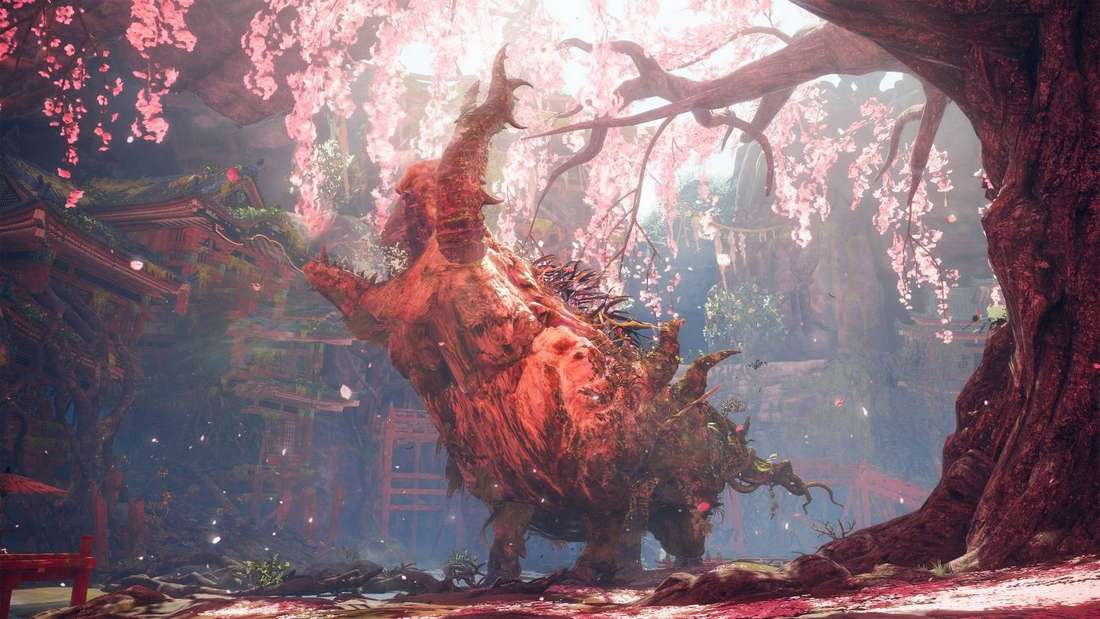Nintendo Switch 2:How Wild Hearts S Could Define Its Performance Potential and Inherent Constraints
Popular Now
 Rust
Rust
 EA SPORT FC 25
EA SPORT FC 25
 Stumble Guys
Stumble Guys
 The Legend of Zelda
The Legend of Zelda
 Sonic the Hedgehog™ Classic
Sonic the Hedgehog™ Classic
 Auto X Drift Racing 3
Auto X Drift Racing 3
 Free Fire
Free Fire
 Genshin Impact
Genshin Impact
 FIFA 23
FIFA 23
 Call of Duty
Call of Duty
 The gaming world eagerly awaits the reveal of Nintendo’s next-generation console, widely dubbed the Nintendo Switch 2. While official details remain scarce, industry insiders and developers are already projecting the kind of gaming performance and graphical fidelity we can expect. Imagining a title like Wild Hearts S, a hypothetical successor or highly optimized port of a graphically demanding action RPG, provides a compelling lens through which to explore both the immense potential and the practical limitations of Nintendo’s upcoming hardware. Such a game could serve as a crucial benchmark, showcasing how the Switch 2 aims to bridge the gap with competitors while maintaining its unique identity.
The gaming world eagerly awaits the reveal of Nintendo’s next-generation console, widely dubbed the Nintendo Switch 2. While official details remain scarce, industry insiders and developers are already projecting the kind of gaming performance and graphical fidelity we can expect. Imagining a title like Wild Hearts S, a hypothetical successor or highly optimized port of a graphically demanding action RPG, provides a compelling lens through which to explore both the immense potential and the practical limitations of Nintendo’s upcoming hardware. Such a game could serve as a crucial benchmark, showcasing how the Switch 2 aims to bridge the gap with competitors while maintaining its unique identity.
The Promise of Enhanced Performance: A Glimpse Through Wild Hearts S
For a title like Wild Hearts S, optimized for the Nintendo Switch 2, the advancements would be immediately apparent. Players could anticipate a dramatic leap in graphic fidelity. Imagine lush, sprawling environments rendered with significantly higher resolutions, moving beyond the current Switch’s 720p portable and 1080p docked limitations to potentially 1080p handheld and dynamic 4K docked output, especially with the rumored inclusion of DLSS technology. This upscaling solution, a cornerstone of NVIDIA’s graphics prowess, would be a game-changer for pushing visual boundaries without overburdening the system’s processing unit. The impact on a title like Wild Hearts S would mean:
- Stable Frame Rates: A significant improvement over previous-generation struggles, targeting a consistent 30fps or even 60fps in less demanding scenarios, enhancing overall gameplay smoothness and responsiveness.
- Improved Textures and Models: Characters, monsters, and environments would boast incredibly detailed textures, higher polygon counts, and more sophisticated material rendering, bringing the game world to life with unprecedented realism on a Nintendo platform.
- Advanced Lighting and Shadows: Leveraging potential hardware improvements, Wild Hearts S could feature real-time global illumination, more realistic shadows, and possibly even limited ray tracing effects, adding depth and immersion to its combat and exploration.
- Larger Draw Distances and World Detail: Expansive hunting grounds would load faster and display more environmental detail from a distance, reducing pop-in and enhancing the sense of scale crucial for a monster-hunting experience.
These enhancements wouldn’t just be cosmetic. They would fundamentally alter the gaming experience, making encounters more visceral, exploration more rewarding, and the overall immersion factor dramatically higher. This level of technical ambition, as exemplified by a hypothetical Wild Hearts S, underscores the Switch 2’s potential to attract more third-party games and deliver a truly modern next-gen console experience in a portable form factor.
 Unpacking the Technical Foundation: What Powers the Switch 2?
Unpacking the Technical Foundation: What Powers the Switch 2?
Central to these projected capabilities are the heavily speculated Switch 2 hardware specifications. Rumors consistently point to a custom NVIDIA Tegra SoC, likely incorporating architectural advancements seen in their recent RTX series GPUs. This would provide a substantial boost in raw computational power compared to the original Switch’s aging Tegra X1 chip. The integration of DLSS (Deep Learning Super Sampling) is arguably the most significant rumored feature, allowing games to render at a lower resolution and intelligently upscale to higher resolutions with minimal visual degradation, effectively delivering high-end graphics efficiently. Furthermore, faster SSD storage is expected, dramatically cutting down load times for vast game worlds like those in Wild Hearts S, and enabling more complex asset streaming.
This combination of advanced silicon and smart software solutions like DLSS positions the Nintendo Switch 2 not just as an incremental upgrade, but as a genuine leap forward in mobile gaming technology. It signifies Nintendo’s commitment to offering a competitive platform that can run contemporary AAA titles, a critical factor for securing robust third-party support and broadening the console’s appeal beyond Nintendo’s beloved exclusive titles.
The Inevitable Limitations: Where Potential Meets Practicality
Despite the exciting prospects, even a game like Wild Hearts S on the Nintendo Switch 2 would inevitably run into certain constraints. Nintendo, as a console manufacturer, operates within a delicate balance of performance, cost, and design philosophy. The Switch 2, while more powerful, will likely not match the raw processing muscle of the PlayStation 5 or Xbox Series X. This means:
- Resolution and Frame Rate Ceilings: While 4K upscaled is probable, native 4K will remain a rarity for demanding games. The most graphically intensive titles might still target dynamic 1080p or 1440p docked, with 30fps as a common performance target, even with DLSS.
- Battery Life: Increased performance inherently consumes more power. Balancing enhanced visuals with acceptable battery life for portable play will be a key challenge, and Wild Hearts S might push this limit, potentially leading to shorter play sessions when untethered.
- Thermal Management: Keeping a powerful chip cool in a compact, portable form factor is a perpetual engineering hurdle. Aggressive thermal throttling could limit sustained peak performance, an important consideration for long hunting sessions in a demanding game.
- Price Point: Nintendo typically aims for an accessible price point. Integrating cutting-edge hardware while keeping the console affordable will necessitate trade-offs, preventing the Switch 2 from becoming a full-fledged portable powerhouse on par with desktop PCs.
- Storage Capacity: While likely offering more internal storage, the cost of high-speed SSDs could mean base models still require users to invest in expandable storage for large titles like Wild Hearts S.
These factors underscore that even with significant upgrades, the Nintendo Switch 2 will retain a distinct identity within the current console generation, prioritizing portability and unique gameplay experiences over raw, uncompromised power.
 Developer’s Dilemma and Opportunity: Crafting the Next-Gen Experience
Developer’s Dilemma and Opportunity: Crafting the Next-Gen Experience
For game developers, the Switch 2 presents both a challenge and an opportunity. Creating a title like Wild Hearts S for the new hardware would require meticulous optimization. Developers would need to master DLSS integration, efficient asset streaming, and smart level design to maximize the system’s capabilities while working within its limitations. The promise of backward compatibility is also a significant factor, requiring games to scale effectively across different generations, or at least ensuring the original Switch library remains playable.
However, the opportunity lies in reaching Nintendo’s massive and dedicated audience with more ambitious, visually stunning games. The enhanced hardware could unlock new creative avenues, allowing for more complex AI, larger player counts in online modes, and richer, more interactive worlds. This could lead to a renaissance of third-party support, with more major publishers willing to bring their flagship titles to the Nintendo console, knowing they can deliver a compelling experience.
Player Expectations Versus Reality
The anticipation for the Nintendo Switch 2 is palpable, fueled by rumors and desires for a true next-gen experience. For a game like Wild Hearts S, players will rightfully expect a significant upgrade. Managing these expectations is crucial. While the Switch 2 will undoubtedly deliver a vastly improved experience over its predecessor, it is important for gamers to understand that it is designed to be a portable hybrid first, with all the inherent compromises that entails compared to dedicated home consoles.
Ultimately, the success of titles like Wild Hearts S on the Switch 2 will depend on how effectively developers can leverage the new hardware while embracing Nintendo’s design philosophy. The console’s true strength will likely lie not just in its raw power, but in its ability to offer unique, compelling gameplay experiences that only Nintendo can deliver, complemented by a stronger lineup of third-party games.
Conclusion: A Balanced Future for Nintendo Gaming
A hypothetical Wild Hearts S on the Nintendo Switch 2 paints a vivid picture of a console capable of delivering vastly improved gaming performance and stunning visuals, thanks to advancements like DLSS technology and a more potent NVIDIA SoC. It highlights the potential for richer, more immersive worlds and smoother, more responsive gameplay.
Yet, it also serves as a stark reminder of the practical considerations inherent in Nintendo’s hardware design: the continuous balancing act between power, portability, cost, battery life, and thermal efficiency. The Switch 2 will undoubtedly be a formidable machine, capable of running demanding titles with impressive fidelity. However, its ultimate triumph will depend on its ability to offer a distinctive, compelling experience that respects its unique hybrid nature, delivering substantial upgrades without directly competing in a raw power struggle with its home console rivals. The future of gaming technology on the Nintendo Switch 2 promises to be a fascinating journey of innovation and strategic compromise, ultimately enriching the vibrant gaming industry.










